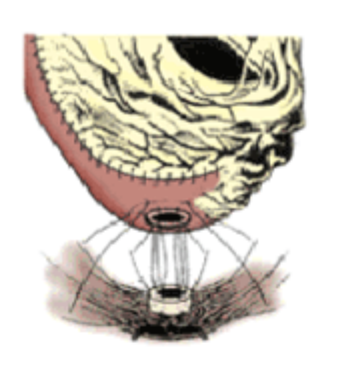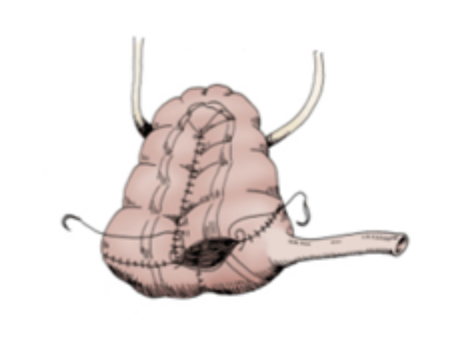36 8.2: Current Treatment Methods
What is radical cystectomy?
Radical cystectomy is the currently used surgical procedure in which the bladder is removed. The reason for doing radical cystectomy is because of the invasiveness of cancer cells, known as metastasis. Radical cystectomy can be accomplished in three major ways: 1. Open surgery, where one single incision is required on the patient’s abdomen to access the pelvis and bladder. 2. Several small incisions on the patient’s abdomen to insert special surgical tools and access the abdominal cavity. 3. Robotic surgery, where the surgeon uses advanced surgery tools, creating minimum invasion to your abdomen and treat the patients more effectively.
What are the advantages and disadvantages of a radical cystectomy?
The main advantages of radical cystectomy are that there is a reduced risk of bladder cancer cells being separated, and it is the quickest way to treat bladder cancer. However, there are potential problems with the reproductive ability of the human patient after surgery. In male patients, the prostate, seminal vesicles, and surrounding lymph nodes are removed. Penile erection and ejaculation will be seriously affected and about 86.3% of male patients reported a deficiency in their ability to get offspring. On the other hand, in female patients, their ovaries, fallopian tube, uterus, cervix, part of the vagina, and surrounding lymph nodes are removed. This will result in the female patients temporarily losing the ability to have a normal menstrual cycle. In addition to reproductive ability, urine excretion functions may also be affected. Therefore, urinary diversions are required after radical cystectomy.
What is a urinary diversion?
After radical cystectomy has been done, the result is a problem with urine excretion functions. Therefore, a way to restore the urine excretion is a necessary procedure known as urinary diversion. There are three types of urinary diversions. The first is called a neobladder, which is the connection of a new bladder to the existing urethra. The new bladder is constructed in a similar way to provide a reservoir to store urine and control urine flow. The second is called a continent diversion, where the ureters are connected to the pouch with a catheterizable stoma. In this situation, the patients’ urethra is involved with cancer, so patients may benefit from continent diversion by connecting one end of the new bladder to the side of the abdomen to create a stoma without using any appliance bags. Lastly, an ileal conduit is a short segment of the small intestine connecting ureters to a stoma on the side of the abdomen. This method is applied when a patient’s bladder function has been seriously damaged and there is a need to create another pathway to excrete urine.



What are the advantages and disadvantages of a neobladder urinary diversion?
The main advantage of a neobladder urinary diversion is that there are are no consequences related to urinary excretion. However, there is a possibility of the immune system rejecting the implant, which can lead to serious problems. For a continent diversion, the main advantage is that there is no need for appliance bags. With respect to ileal conduits, the biggest disadvantage is that patients have a high risk of infection because an ostomy bag is necessary to maintain excretion functions.
What is bladder wall substitution?
Bladder wall substitution involves tissue engineering techniques to artificially synthesize new bladder components from non-intestine organic material from the patients’ own body.
What are the advantages and disadvantages of bladder wall substitutions?
This method has advantages related to the efficiency to treat bladder cancer because it is synthesized from the patient’s own body, so the risks of rejection reduced. Also, because it’s a replacement method, the normal bladder functions may be restored to a high degree. However, because this method involves genetic engineering, another potential side-effect is inducing another cancer that has not yet been found. Furthermore, the service life of the synthesized components also need to evaluated.
Test Your Knowledge!
- What are the three types of radical cystectomy?
- What are the advantages and disadvantages of radical cystectomy?
- What are the three types of urinary diversions?
- What are the main advantages and disadvantages of urinary diversions?
